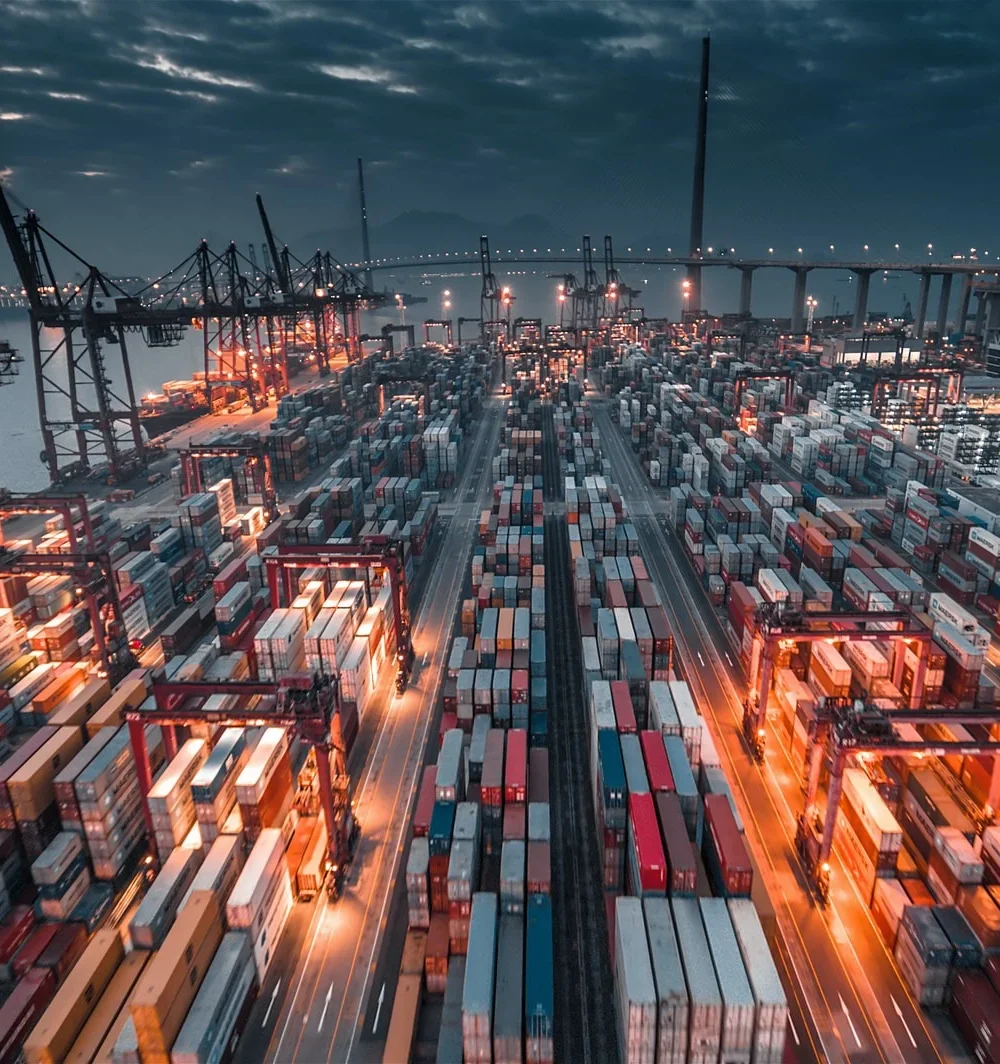The metals
industry, a cornerstone of modern infrastructure and technology, relies heavily
on efficient logistics to ensure seamless operations across the supply chain.
With global markets becoming increasingly competitive and complex, automation
has emerged as a transformative force, revolutionising the way metals are
transported, stored, and managed. For platforms like MetaMetalX, harnessing the
power of automation is key to optimising logistics and staying ahead in this
dynamic industry.
The Role of Logistics in the
Metals Industry
Metals
logistics encompasses the planning, coordination, and execution of moving raw
materials and finished products across the supply chain. It involves activities
such as transportation, warehousing, inventory management, and order
fulfilment. Given the weight, size, and value of metals, efficient logistics is
critical to reducing costs, improving delivery times, and maintaining quality
standards.
Automation is
reshaping logistics by introducing advanced technologies and systems that
streamline operations, enhance accuracy, and boost productivity. From robotic
warehouses to AI-driven route planning, automation is driving a paradigm shift
in how metals are managed and moved.
Key Areas of Automation in
Metals Logistics
1. Automated
Warehousing
Automated
warehouses use robotics, conveyors, and advanced software to handle tasks such
as storage, retrieval, and inventory management. In the metals industry, where
materials are often heavy and bulky, automated systems minimise manual labour
and reduce the risk of accidents.
Robotic Handling:
Automated guided vehicles (AGVs) and robotic arms can lift and transport
metals with precision, reducing damage and enhancing safety.
Smart Shelving Systems:
These systems optimise space utilisation and enable quick access to stored
materials, improving operational efficiency.
Real-Time Inventory Tracking:
IoT-enabled sensors and barcode scanners provide real-time data on
inventory levels, ensuring accurate stock management.
Platforms like
MetaMetalX leverage these technologies to provide users with seamless inventory
management and efficient warehousing solutions.
2. AI-Driven
Route Optimisation
Transportation
is a significant component of metals logistics, accounting for a substantial
portion of operational costs. AI-driven route optimisation uses advanced
algorithms to identify the most efficient paths for deliveries, taking into
account factors such as traffic, weather, and fuel consumption.
Cost Reduction:
By minimising travel distances and optimising fuel usage, AI-driven
systems reduce transportation costs.
Improved Delivery Times:
Real-time adjustments to routes ensure timely deliveries, enhancing
customer satisfaction.
Sustainability:
Optimised routes contribute to reduced carbon emissions, aligning with the
industry’s sustainability goals.
3. Predictive
Maintenance
Equipment
failures can disrupt logistics operations and lead to costly delays. Predictive
maintenance uses IoT sensors and data analytics to monitor the condition of
vehicles and machinery, predicting potential failures before they occur.
Minimised Downtime:
Early detection of issues allows for timely repairs, preventing unexpected
breakdowns.
Cost Savings: Reducing
unplanned maintenance and extending equipment lifespan lowers operational
costs.
Enhanced Safety:
Ensuring that equipment is in optimal condition reduces the risk of
accidents during transportation and handling.
4.
Blockchain-Powered Transparency
Blockchain
technology is enhancing transparency and trust in metals logistics by providing
immutable records of transactions and supply chain activities. This is
particularly valuable for ensuring the authenticity and compliance of
materials.
Traceability:
Blockchain enables stakeholders to track the journey of metals from source
to destination, ensuring ethical sourcing and adherence to quality
standards.
Fraud Prevention:
Secure and tamper-proof records reduce the risk of fraud and counterfeit
materials.
Streamlined Documentation:
Automating paperwork and digitalising records simplify compliance with
regulatory requirements.
MetaMetalX
integrates blockchain solutions into its platform, ensuring secure and
transparent logistics operations for its users.
5. Autonomous
Vehicles and Drones
The advent of
autonomous vehicles and drones is revolutionising transportation in metals
logistics. These technologies offer faster, safer, and more efficient ways to
move materials.
Driverless Trucks:
Autonomous trucks equipped with advanced sensors and AI navigate roads
with precision, reducing human error and improving efficiency.
Drones for Last-Mile Delivery:
Drones provide an innovative solution for last-mile deliveries, especially
in remote or congested areas.
Enhanced Safety:
Eliminating the need for human drivers reduces the risk of accidents and
injuries.
6. Advanced
Data Analytics
Data analytics
plays a crucial role in metals logistics by providing actionable insights into
supply chain performance. Automated systems collect and analyse vast amounts of
data to optimise operations and identify areas for improvement.
Demand Forecasting:
Predicting demand trends helps businesses plan inventory levels and avoid
overstocking or shortages.
Performance Metrics:
Analytics tools track key performance indicators (KPIs) such as delivery
times, costs, and customer satisfaction.
Risk Management:
Identifying potential risks and disruptions enables proactive
decision-making and contingency planning.
Benefits of Automation in
Metals Logistics
The integration
of automation into metals logistics offers a wide range of benefits for
businesses, including:
1. Improved
Efficiency
Automation
streamlines logistics operations, reducing manual intervention and speeding up
processes. This leads to faster order fulfilment and enhanced productivity.
2. Cost
Reduction
By optimising
transportation, warehousing, and maintenance, automation significantly lowers
operational costs. Businesses can reinvest these savings into innovation and
growth.
3. Enhanced
Accuracy
Automated
systems minimise errors in inventory management, order processing, and
transportation, ensuring that materials are delivered accurately and on time.
4.
Sustainability
Automation
supports sustainability goals by reducing energy consumption, minimising waste,
and lowering carbon emissions. These practices align with the industry’s
commitment to environmental responsibility.
5. Safety and
Risk Mitigation
By automating
hazardous tasks and monitoring equipment health, automation reduces the risk of
accidents and ensures a safer working environment.
6. Scalability
Automated
logistics systems can easily adapt to growing business needs, allowing
companies to scale their operations without compromising efficiency.
Challenges of Implementing
Automation
While the
benefits of automation are undeniable, its implementation comes with challenges
that businesses must address:
High Initial Costs:
Investing in automation technologies can be expensive, particularly for
small and medium-sized enterprises.
Technological Integration:
Ensuring that new systems are compatible with existing infrastructure
requires careful planning and expertise.
Workforce Transition:
Automation may lead to job displacement, necessitating retraining and
upskilling of employees.
Cybersecurity Risks:
The digitalisation of logistics operations increases vulnerability to
cyber threats, requiring robust security measures.
How MetaMetalX is Driving
Automation in Metals Logistics
As a leader in
the metals industry, MetaMetalX is at the forefront of integrating automation
into logistics. Here’s how the platform is driving innovation:
AI-Driven Tools:
MetaMetalX provides AI-powered analytics for route optimisation, demand
forecasting, and performance tracking.
Blockchain Integration:
The platform ensures transparency and traceability through blockchain
technology, building trust among stakeholders.
IoT Connectivity:
MetaMetalX leverages IoT devices for real-time tracking and inventory
management, enhancing supply chain visibility.
Customised Solutions:
The platform offers tailored automation solutions that address the unique
needs of businesses in the metals industry.
The Future of Automation in
Metals Logistics
The role of
automation in metals logistics will continue to expand as technologies evolve
and businesses seek to optimise their operations. Key trends to watch include:
AI-Driven Automation:
Advanced AI algorithms will further enhance efficiency and decision-making
in logistics.
Sustainable Logistics:
Automation will support the industry’s transition to greener practices,
reducing environmental impact.
Integration with Digital Platforms:
Platforms like MetaMetalX will play a central role in unifying logistics
operations through comprehensive digital solutions.
Conclusion
Automation is
transforming metals logistics, offering unparalleled efficiency, transparency,
and sustainability. By integrating advanced technologies such as AI, IoT, and
blockchain, businesses can overcome logistical challenges and unlock new
opportunities for growth.
Platforms like
MetaMetalX are leading the charge, providing innovative solutions that empower
stakeholders to navigate an increasingly automated landscape. As the metals
industry continues to evolve, embracing automation will be essential for
achieving long-term success and competitiveness.
How Automation is Transforming Metals Logistics
0
Comments
Likes
Clear Filters





